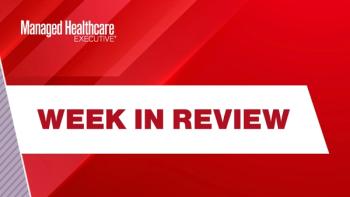
Hitting the ACO target
More than 750 government and private ACOs are now in place, helping healthcare transition away from fee-for-service. Find out what's working and what's planned for the future.
Ask Stephen Rosenthal about the impact accountable care organizations (ACOs) can have on the communities they serve, and he’ll tell you about a 38-year-old woman who’s a patient at Bronx, New York-based Montefiore Medical Center. This 38-year-old woman has lived with diabetes since the age of eight; today, she experiences kidney failure, vision problems, circulatory challenges, and mental health issues.
Rosenthal, chief operating officer of
Related:
The chronic health issues suffered by this patient at Montefiore are at the very heart of what Donald Berwick, MD, president emeritus and currently a senior fellow at the Cambridge, Massachusetts-based
He wrote in a 2008 Health Affairs article that “[T]he balanced pursuit of the Triple Aim is not congruent with the current business models of any but a tiny number of U.S. health care organizations.” Here’s the paradox as he presented it: “From the viewpoint of the United States as a whole, [the Triple Aim] is essential; yet from the viewpoint of individual actors responding to current market forces, pursuing the three aims at once is not in their immediate self-interest.”
Early ACO success
A lot has happened since Berwick’s article was published. First, there was the passage of the Health Information Technology for Economic and Clinical Health Act of 2009, commonly known as the
At press time, there were 247 ACOs with private payer contracts, 395 ACOs with Medicare or Medicaid contracts, and 112 ACOs with both private payer and government contracts, according to David Muhlestein, senior director of research and development at Salt Lake City, Utah-based-based
CMS has seen success with its Pioneer ACO program, which requires providers to take on varying levels of risk. In a May 4, 2015, press release, CMS announced that in the program’s first two years, it resulted in savings of $384 million-of that amount, $264 million came from 19 Pioneer ACOS. CMS also announced that the program saw a drop off in savings between year one and year two, from $279.7 million in 2012 to $104.5 million in 2013.
According to CMS, the Pioneer ACO model serves more than 600,000 Medicare beneficiaries, and compared to their counterparts in regular fee-for-service of Medicare Advantage plans, Medicare beneficiaries who are in Pioneer ACOs, on average:
- Report more timely care and better communication with their providers;
- Use inpatient hospital services less and have fewer tests and procedures; and
- Have more follow-up visits from their providers after hospital discharge.
“This success demonstrates that CMS can design and test innovative payment and service delivery models that produce better outcomes for the Medicare program and beneficiaries,” said Patrick Conway, MD, deputy administrator for innovation and quality at CMS, in the press release. “This gives CMS greater confidence in scaling elements of the model to benefit people across the nation, and we are working to determine the best strategies for embedding the lessons we have already learned from the Pioneer Model into permanent Medicare programs and our nation’s health system.”
Related:
In an independent analysis of the Pioneer ACO program to date, a 2015 research report by Washington, D.C.-based
Room for improvement
Today’s ACOs are in the state of learning, says Muhlestein. Providers are learning how they can change how they provide care, take part in shared savings, and manage the health of the populations they serve.
“A lot of providers are experimenting with population health. There’s no strong evidence for replicable models, but there’s definitely a lot of learning,” he says. The general sense among providers is that healthcare is moving in the direction of valued-based care, and ACOs should continue to drive momentum around these care models. Muhlestein has observed that there’s a consensus among providers that they will ultimately be responsible for a defined population going forward, whether that happens within an ACO-type organization or not.
Larry Kocot, visiting fellow in economic studies at the Washington, D.C.-based
Related:
Still, there’s room for improvement in terms of shared risk, according to Kocot, a former adviser to the administrator of CMS. “The Medicare Shared Savings ACOs are serving over 7 million people, but less than 1% of the providers are in two-sided risk. There’s a barrier to doing well in this program. With more assumption of risk, we’ll have more innovation and more savings and increased performance in the program,” he says.
Payer-provider partnerships
(BHN) describes itself as an ACO that joins Banner Health, Arizona’s largest healthcare provider, and its network of physicians with commercial and government payers. BHN started its Pioneer ACO journey in 2011 because “healthcare in its current form is unsustainable,” says Lisa Stevens Anderson, BHN’s chief operating officer. BHN achieved more than $13 million in shared savings in 2012, its first year in the program, and more than $9 million in its second year, according to CMS.
Investing in technology is critical, says Stevens Anderson. The network takes data gleaned from its medical records, its claims systems, and lab systems and then uses that information to organize its patient populations into various segments to determine which members have the “highest, most intense need.” The network provides subsidies to independent physicians to invest in EHRs, she notes.
To care for the needs of the 1% of its population most in need of care, BHN has created a program called
The tablet-like technology was designed to make it easy for this patient population to connect with the iCare team “at the touch of a button,” she says. An added benefit of these virtual connections into patients’ homes is that health coaches can find out if patients are taking their pills correctly or if there are any rugs in their homes that they could trip over, which could result in a fall.
Related:
One of Banner Health Networks’ early private payer ACO partners was Aetna; that ACO relationship started in 2012. The two announced in an August 26, 2014, press release that their collaborative work resulted in a shared savings of approximately $5 million in 2013 (the latest year for which numbers are available) and a 5% decline in average medical costs for members. The press release also notes improved cancer screening rates, blood sugar management in diabetic members, and reduced avoidable hospital readmissions.
Daniel Finke, senior vice president of accountable care solutions at Aetna, says that the payer has 67 ACO programs with providers around the country. These arrangements have a care model where there’s upside and downside risk. Key to Aetna’s success with ACOs, according to Finke, is providing access to data, healthcare technology, and care management tools for providers.
Aetna helps providers to figure out who is most at risk of getting sick, and then puts that information in the hands of the healthcare system, right at the point of care, says Finke. Because that data is shared with providers in a timely way, it translates into better patient engagement and better outcomes.
The future of ACOs
On March 3, 2015, CMS announced the
Developed by the CMS Innovation Center for ACOs with experience in coordinating care for patient populations, this initiative will allow provider groups to assume higher levels of financial risk and reward than are available under the current Pioneer model and the Medicare Shared Savings Program. “The goal of the Model is to test whether strong financial incentives for ACOs can improve health outcomes and lower expenditures for Original Medicare fee-for-service beneficiaries,” according to the announcement.
Kocot says CMS deserves a lot of credit for trying to create flexibility by offering several different payment mechanisms for providers with this new model. CMS is trying to cater to providers’ particular needs in terms of monthly payments, capitated payments, or normal fee-for-service plus monthly infrastructure payments, he says. While he points to greater opportunities for patient engagement and greater savings with downside risk that could be part of this model, it’s expected that only 15 to 20 ACOs will participate.
Related:
Where Kocot is really looking to see innovation in ACOs is with private payers. While he notes that the CMS is evolving regulations in response to what it’s learning about what works with ACOs, its approach as an organization is going to be conservative. “CMS is a federal regulator trying to protect the Medicare Trust Fund. They’re going to be very conservative in their approaches. They’re going to be very analytical in their evaluations. And they’re going to be very sure before they put patients and/or the Medicare Trust Fund at risk.
“That’s an advantage, that we have very responsible people in government who are taking small steps. At the same time, we really need bold steps if we’re really going to break out of the payment system that we have, and that’s why it’s really interesting to watch the private sector. Because the private sector is actually contracting with ACOs in a way that’s probably more flexible than the federal government can.”
Aine Cryts is a writer in Boston, Massachusetts.
Newsletter
Get the latest industry news, event updates, and more from Managed healthcare Executive.

















































